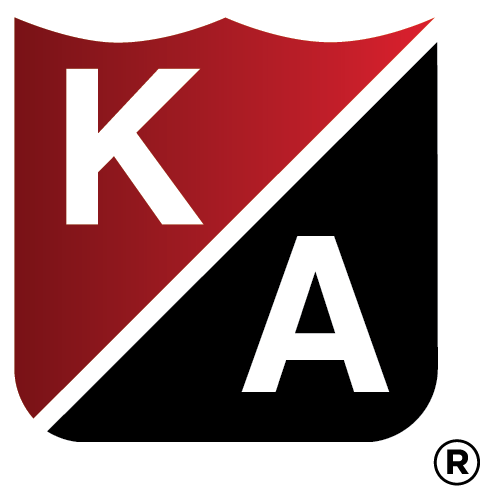Proper insurance is a crucial risk management tool for contractors, design professionals and project owners. Each is generally required by contract, statute, or sense of self-preservation, to purchase and maintain appropriate insurance coverage.
Since everyone has insurance, it is easy to assume that most risks on a construction project are covered. The purpose of this article is to correct that misperception, by describing the typical scope of protection offered by three forms of insurance commonly found on a construction project: Commercial Liability Insurance, Builders Risk Insurance, and Professional Liability Insurance.
Of course, the exact coverage provided by an insurance policy can only be accurately assessed by reviewing the policy at issue, which can vary widely depending on the form, carrier and endorsements. It is important to review every policy benefiting your project to ensure the policy is appropriate for the project, and complies with both the contract and state law.
Commercial General Liability Insurance
Almost all construction contracts require that contractors and subcontractors carry Commercial General Liability (“CGL”) insurance. Good contracts also specify the CGL industry forms permitted for the project, the minimum coverage amounts, the required endorsements, and the policy duration. Generally speaking, CGL policies typically cover (1) an occurrence, (2) causing an injury to a person or property, (3) that is not subject to an exclusion. While coverage may appear broad, each of those three elements gives an insurer a way around covering your loss.
The primary purpose of a CGL policy is to protect the contractor and owner in the event an accident on the jobsite causes property damage or personal injury to a third-person. If a carpenter drops a hammer, injuring a bystander or her property, any claim by the bystander against the contractor would be covered by the contractor’s CGL policy. By adding the owner as an additional insured, coverage is extended to any claim by the bystander against the owner. Of course, things are almost never that simple. For example, while the term “occurrence” seems self-explanatory, courts’ interpretations are inconsistent. As a rule of thumb, a foreseeable or expected event is not an “occurrence,” whereas an unforeseeable or “fortuitous” accident (like a dropped hammer) is more likely a covered occurrence.
The most frequently litigated question in the construction context is whether the CGL policy covers defective work performed by the insured contractor, or any resulting damage. The current national trend is for courts to construe faulty workmanship as an “occurrence,” and the resulting damage as “property damage,” both of which are covered under the policy. But, Ohio courts take a narrower view.
In Westfield Ins. Co. v. Custom Agri Systems, Inc. 133 Ohio St.3d 476 (2012) the Ohio Supreme Court held that faulty performance is not an “occurrence” because it is “not unexpected.” The Court also held that the faulty work itself is not “property damage” under a CGL policy. Instead, in Ohio, CGL policies will only cover unanticipated damages resulting from faulty construction. For example, defective installation of a roof on an existing structure is not an occurrence or property damage, but a subsequent rain storm that infiltrates the defective roof may be an occurrence, and any resulting property damage to the preexisting property would be covered by the CGL policy. The occurrence must be an event independent of the defective work, which is made possible as a result of the faulty construction.
The following summary describes the typical coverage and limits of CGL insurance. As noted however, CGL policies can differ depending on the industry form and endorsements, which should be included in your contract documents.
Typically Covered (Subject to Exclusions)
- Bodily Injury and Property Damage caused by an unforeseeable event or accident.
- Some consequential damages caused by a covered event (policy specific).
- Property damage resulting from an event independent of, but made possible by, defective work.
- Personal and advertising injury, such as libel, slander and copyright infringement.
- Injury or damage resulting from completed, but improperly performed or installed work.
Typically Not Covered (Subject to Exclusions)
- A foreseeable or expected event.
- Purely economic damages, not arising from or incidental to bodily injury or property damage.
- A contractor’s defective work.
- Important Exclusions:
- Reasonably expected or anticipated injuries;
- Employer’s liability for injury to employee;
- Damage to the contractor’s own property or work, whether in progress or completed; and
- Damage to the property that is being restored, repaired or replaced.
Most contracts also require the owner to purchase and maintain property insurance that protects the work-in-progress and certain materials, which remains in effect throughout construction. This type of property insurance is referred to as “builder’s risk insurance,” and it is most often written on an “all-risk” policy. The term “all-risk” falsely implies that the insurance will protect the owner against any loss or damage to the property. As is true of CGL policies, the protections afforded may be quite limited.
Builder’s Risk and Property Insurance
Under a typical builder’s risk policy, the insurer agrees to pay for “direct physical loss” or “damage to the covered property” during the course of construction, unless the loss is subject to an exclusion. The “covered property” usually consists of the building or structure under construction, as well as machinery, equipment, materials, and supplies that will become a part of the improvement.
In more general terms, builder’s risk insurance typically covers damage to the work during the course of construction. The purpose is to protect against losses arising from the negligence of contractors, as well as certain “acts of god” like fire and lightning. Many courts have held that builder’s risk insurance is, by its nature, intended to cover only new work, not preexisting structures. Accordingly, if a project entails improvement to an existing structure, the owner should consider purchasing an endorsement, or expand the policy’s definition of “covered property.”
In contrast to CGL policies, builder’s risk insurance only offers “first-party” coverage. First-party coverage protects the insured against damage to its own property, not for the claims of a third-party. Accordingly, a builder’s risk policy should name each owner, contractor, subcontractor, and design professional as an insured. Also, unlike CGL policies, builder’s risk policies are not written on industry forms, and can differ more significantly from carrier to carrier. In fact, the most commonly litigated issue arising from builder’s risk insurance is whether an owner breached its contract by purchasing less coverage than was required. This highlights the importance of reviewing and understanding your builder’s risk policy.
Another common coverage issue is the degree to which builder’s risk insurance covers costs indirectly resulting from the accident, such as delay damages, acceleration costs, lost use, and other consequential effects. Most builder’s risk policies exclude “consequential” damages and similar losses, however these “soft costs” may be added by a coverage extension.
The following summary describes the coverage generally afforded by builder’s risk insurance. Once again, this summary merely describes industry norms, which vary by carrier and endorsements. Minimum coverages, and the party responsible for purchasing builder’s risk insurance, should be clearly defined in the contract documents.
Typically Covered (Subject to Exclusions)
- Loss to the work during construction, caused by negligence or “acts of god,” typically including:
- Fire;
- Lightning;
- Explosion;
- Windstorm and hail;
- Smoke; and
- Sprinkler leaks.
- Loss or damage to equipment or materials to be incorporated into the work.
- Losses independent of, but made possible by defective design or construction.
- Temporary structures.
Typically Not Covered (Subject to Exclusions)
- Existing buildings or structures (may be added by endorsement).
- Property damages after completion.
- Important Exclusions:
- Consequential loss (soft costs);
- Faulty design or construction;
- Collapse of a building or structure;
- Damage caused by excavation activities;
- Freezing and water damage;
- Damages caused by corrosion or rust; and
- Malicious Mischief.
Professional Liability Insurance
In many ways, the potential for loss arising from poor design work is greater than any other risk on a construction project. There is a possibility that the owner, contractors and subcontractors will suffer substantial delays, bodily injury or property damage in the event of defective design. Further, depending on the project delivery model, all claims will flow through the owner, which in many cases is the only party in privity of contract with the architect or engineer. This risk is somewhat reduced on design-build projects. Regardless of the delivery model, it is crucial that the design professional on your project has professional liability insurance tailored to the project.
Professional liability insurance covers losses arising from services considered professional in nature, typically architectural, engineering or other design services. Professional liability policies generally cover the “wrongful act” or “professional negligence” of an architect or engineer. A wrongful act may be defined, depending on the carrier, as a negligent act, error, omission, and sometimes a breach of contract. Dishonest or fraudulent acts are generally excluded. In addition to the acts and actors covered by professional liability policies, coverage differs from CGL and builder’s risk insurance in several respects. Most importantly, professional liability policies do not require bodily injury or property damage to trigger coverage.
While those damages are covered, professional liability insurance may also cover some nonphysical and purely economic damages caused by design errors and any resulting delays. On the other hand, defense costs of the insured are often deducted from the policy limits. The result is that the amount available to pay claims is depleted by the insured’s legal costs related to the claim. Further, professional liability insurance is typically written on a “claims-made” policy, meaning that the claim must be made during the policy term. CGL policies are most commonly “occurrence-based,” meaning coverage depends on the date of occurrence, not the date of the claim.
Another important characteristic of professional liability insurance is that it may cover contractual liability. However, there is a gap in coverage when the breach of contract does not rise to the level of “professional negligence.” While a professional standard of care is typically incorporated into design contracts, technical breaches – which in many cases can cause substantial harm – may not constitute professional negligence. For example, if an architect fails to turn over plans or respond to a contractor’s request for information within the time required, there may be a breach, but not professional negligence. Coverage for this sort of breach can be added through an endorsement for “insured contract coverage.”
To summarize, professional liability policies generally provide the following coverage:
Typically Covered (Subject to Exclusions)
- Loss to the work during construction, caused by negligence or “acts of god,” typically including:
- Damage caused by a “wrongful act.”
- Bodily injury and property damage.
- Some consequential damages (policy specific).
- Economic damages.
- Contractual liability resulting from professional negligence.
Typically Not Covered (Subject to Exclusions)
- At risk construction management services
- Dishonest, fraudulent, malicious, or criminal conduct.
- Important Exclusions:
- Willful/Reckless Acts;
- Fines of Governmental Agencies however sub limits for FHA, OSHA & ADA are common;
- Contractual penalties or liquidated damages;
- Faulty workmanship for work performed by the insured or its subcontractors; and
- Delay costs due to the acts, errors or omissions of the insured.
This article was reprinted with permission from the Spring 2015 BrickerConstructionLaw.com Newsletter. a/e ProNet made a simple update to the professional liability table.Clearly, not all risks on a construction project are covered by insurance. Understanding the general scope of common insurance forms is an important first step in any effort to address gaps in insurance coverage, and ensuring proper compliance with your contract, state law, and your appetite for risk. Consulting with your legal counsel and insurance professional is a good way to gain that understanding.
Note: This article applies only to Ohio public projects delivered using design-bid-build, and not the additional project delivery methods recently authorized by the General Assembly as part of construction reform—Construction Manager at Risk and Design/Build. In those cases, the contract with the owner is not awarded via a bid, but based on “best value” after considering qualifications and price proposals. This document has been prepared as a general reference document for informational purposes. The information contained herein is not intended to be and should not be construed as legal advice. Each circumstance should be considered and evaluated separately, and possibly with involvement of legal counsel.



